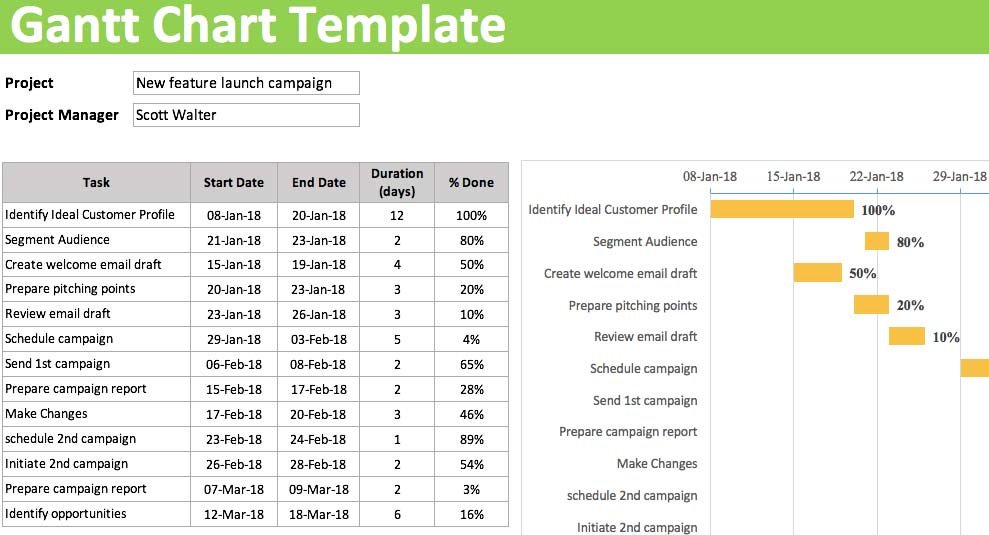In today’s fast-paced and complex business environment, effective project management is crucial to ensure successful completion of tasks and achieve desired outcomes. A Gantt chart is a powerful tool that allows project managers to visually plan, track, and manage projects.
With the advent of cloud-based collaboration platforms like Google Sheets, the integration of Gantt chart templates has become even more accessible and convenient. This article will explore the benefits of using Gantt chart templates in Google Sheets and provide a comprehensive guide on how to create and utilize them for effective project management.
Fixed costs, on the other hand, remain constant regardless of a company’s production or sales volume. These costs include expenses like rent, insurance, salaries of permanent staff, and depreciation of fixed assets. Fixed costs do not change with business activity levels and are incurred regularly, making them essential for calculating a company’s break-even point and profitability.
Understanding Gantt Charts
A Gantt chart is a horizontal bar chart that illustrates project schedules, tasks, and dependencies. It provides a visual representation of the project timeline, showing the start and end dates of each task, as well as their durations and interdependencies. Gantt charts enable project managers and team members to identify potential bottlenecks, track progress, allocate resources efficiently, and communicate project plans effectively.
Many organizations and businesses determine the point at which their total revenue equals their total expenses. In this way, companies can make their feasibility of work. For example, pricing of products, production volumes, and business strategy.
Benefits of Using Gantt Chart Templates in Google Sheets
- Accessibility and Collaboration:
- Google Sheets provides a cloud-based platform that allows multiple team members to access and collaborate on a Gantt chart simultaneously.
- Real-time updates ensure everyone stays informed about project progress and any changes made to the chart.
- Team members can add comments, assign tasks, and track their progress within the Gantt chart template, promoting transparency and accountability.
- Ease of Use and Customization:
- Google Sheets offers a user-friendly interface with intuitive features for creating and customizing Gantt chart templates.
- Users can easily modify the chart layout, add or remove tasks, adjust timelines, and assign resources.
- Conditional formatting and color-coding options in Google Sheets help highlight critical tasks, deadlines, and milestones for better visual comprehension.
- Integration with Other Google Suite Tools:
- Gantt chart templates in Google Sheets seamlessly integrate with other Google Suite applications like Google Drive, Google Calendar, and Google Docs.
- Project-related documents, schedules, and important information can be stored, linked, and accessed within the same ecosystem, ensuring data consistency and ease of reference.
Creating a Gantt Chart Template in Google Sheets
To create a Gantt chart template in Google Sheets, follow these steps:
- Open Google Sheets and create a new spreadsheet.
- Set up the basic structure:
- In the first column, list the project tasks or deliverables.
- In the second column, enter the start dates of each task.
- In the third column, specify the durations of the tasks.
- In the fourth column, calculate the end dates by adding the durations to the start dates.
- Create the Gantt chart:
- Select the data range (task names, start dates, durations, and end dates).
- Click on the “Insert” tab and select “Chart.”
- Choose the “Bar chart” option and customize the chart style, colors, and labels as per your preference.
- Enhance the chart:
- Add horizontal gridlines to improve readability.
- Adjust the axis scales to match the project timeline.
- Apply conditional formatting to highlight important milestones or critical paths.
Utilizing Gantt Chart Templates for Effective Project Management
- Task Planning and Sequencing:
- Use the Gantt chart template to define project tasks, set start and end dates, and identify dependencies.
- Sequence the tasks by linking them with appropriate predecessors and successors.
- Visualize the critical path to identify tasks that directly impact project timelines.
- Resource Allocation:
- Assign resources or team members to specific tasks in the Gantt chart template.
- Monitor resource availability and make adjustments to prevent overallocation or conflicts.
- Evaluate resource utilization and balance workloads for optimal productivity.
- Tracking Progress:
- Update the Gantt chart regularly to reflect actual progress made on each task.
- Compare the planned timeline with the actual timeline to identify any delays or deviations.
- Analyze task dependencies and adjust schedules accordingly to minimize disruptions.
- Communicating and Reporting:
- Share the Gantt chart template with project stakeholders to ensure everyone has visibility into the project timeline and progress.
- Generate reports and visual representations from the Gantt chart to provide updates on project status, milestones, and upcoming tasks.
- Conduct periodic reviews with the team to discuss challenges, evaluate progress, and make necessary adjustments.
Conclusion
Gantt chart templates in Google Sheets offer a flexible and collaborative solution for effective project management. The accessibility, ease of use, and integration with other Google Suite tools make it a preferred choice for teams and organizations. By utilizing Gantt chart templates, project managers can efficiently plan, track, and communicate project progress, resulting in improved productivity, better resource management, and successful project outcomes. With the power of Gantt charts combined with the convenience of Google Sheets, project management becomes a streamlined and visual process that enhances team collaboration and project success.

